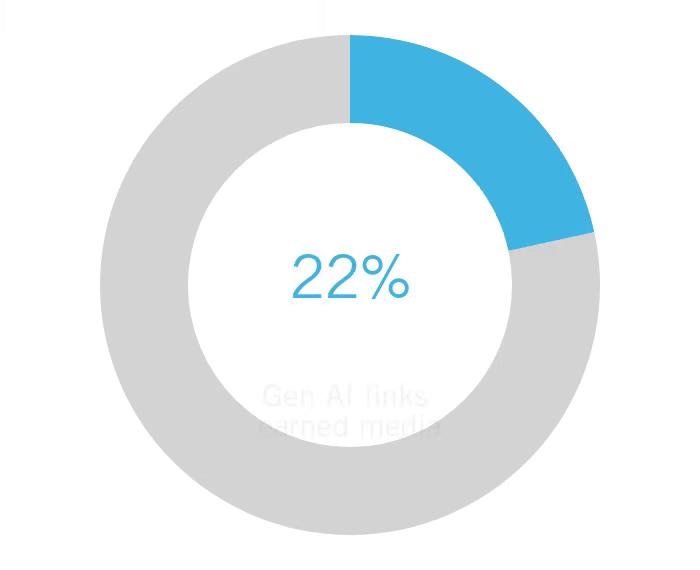
Winning AI Search: When Key Words Aren’t Enough
by James Sorensen, Eric Scheer, and Kyle Swan
The way consumers shop is changing. Your customers aren’t just searching for a list of links anymore; they’re asking AI for direct, concise answers. This shift is not a future trend — it’s happening now.
This article begins a two-part series that breaks down winning AI search step by step.
Part 2 is now also available: Winning AI Search: When Key Words Aren’t Enough
To shed light on this evolving landscape, we surveyed 600 U.S. consumers across demographic groups to understand their habits. We found that 29% of consumers used a generative AI platform while shopping in the past year. These consumers are leveraging AI throughout their entire purchase journey, from initial research (44% of AI users) to final price comparisons (46% of AI users), and these numbers are expected to rise.1 Adding to the disruption, almost all links cited by generative AI are unpaid, with a large majority (89%) coming from earned media sources.2

Source: “What Is AI Reading?” Muck Rack Blog, 13 Aug. 2025, https://muckrack.com/blog/2025/08/13/what-is-ai-reading/
The Challenge for Brands
This new shopping behavior and Gen AI’s content source preference present a significant challenge for brands. As searching for products and services becomes more of a zero-click experience, putting more budget towards SEO won’t necessarily mean your brand will be cited.
Consider a recent example: a shopper searches on Google for “what are the 3 best brands of earbuds?” The search provides a smattering of articles and sponsored links, offering little direct guidance. However, when the same shopper asks an AI platform the same question, they get three specific recommendations with a concise rationale, a list of product highlights and an option to make direct comparison amongst brands. Not only does AI provide a more complete answer, but the reasoning of the AI platform produces more usable and effective information. As a result, users experience a combination of benefits that make AI search more efficient. This is the new reality.
And, AI search isn’t just good for consumers — it’s good for brands too. Data shows that users who search via AI platforms are better informed, more confident, and further along in their decision-making process. For example, visitors arriving from generative AI sources show 8% higher engagement, browse 12% more pages, and have a 23% lower bounce rate.3
AI Platforms are Rapidly Changing
To adapt to these shifts in shopper behavior, new tools are paving the way for a more integrated era of commerce. For example, Walmart is forming a partnership with OpenAI to let shoppers buy its products directly within ChatGPT.4 Microsoft Advertising has introduced Compare & Decide Ads for Bing Chat5, which pull product data into a comparative table. Perplexity has tested and is improving “sponsored follow-up questions” as an ad format.6 Perhaps most impactful of all, Agentic commerce is building AI agents that can autonomously anticipate needs, research options, negotiate deals, and execute transactions.7
How Brands Can Respond
So, how do you ensure your brand will be included in AI’s answer? In a future article, we will provide a detailed playbook, but for now here are a few guidelines to follow when building out your digital content:
- Prioritize Clarity and Authority: Create content that uses a direct, conversational style that answers common consumer questions. Lists are the single most effective format, accounting for one-in-three AI citations (e.g. “Top 10,” “5 Best”).
- Become the Topic Leader: Instead of targeting broad keywords, create comprehensive content on your industry. One way to do this is to embrace third-party validation as AI algorithms place high value on earned media and external mentions.
- Feature Robust FAQs: Leveraging your customer feedback data can help create a robust, highly visible FAQ section. FAQs like lists, are preferred by AI because the Q&A pairing allows for better parsing and more meaningful recommendations.
Overall, the future of brand visibility is not about being a name on a list; it’s about being the definitive answer. By shifting your strategy to build trust and authority, you can ensure your brand is not just found, but is the definitive choice offered by AI and, ultimately, by the customer.
To learn more about shifting consumer habits within the shopper and retail space, contact James Sorensen.

James Sorensen has been shaping shopper insights since 1993. He began his career with Sorensen Associates, a leader in in-store research, and later led Kantar’s shopper insights practice. Today, James brings this deep expertise to Burke, serving as a trusted advisor in retail and shopper insights—helping clients uncover innovative, actionable strategies for growth.

Eric Scheer is SVP, Brand Solutions at Burke, Inc. Drawing from over 20 years of experience, Eric is especially good at solving brand challenges. Having been an entrepreneur, combined with extensive branding, design, and strategy experience, Eric has the know-how and strategic approach to conquer any obstacle your brand may encounter.

Kyle Swan is Director, Data Science at Burke, and leads a talented team that advanced analytics with actionable insights to enhance business performance and shape marketing strategy for our clients. He specializes in statistical analysis and marketing measurement to uncover why people buy.
Interested in reading more? Check out James’s other articles:
How Big Brands Can Better Resonate with Gen Z
Accelerating the Shopper Journey with Gen AI
As always, you can follow Burke, Inc. on our LinkedIn, Facebook, and Instagram pages.
Sources:
- Burke, Inc. Burke Omnibus Research Survey. June 2025. Dataset.
- “What Is AI Reading?” Muck Rack Blog, 13 Aug. 2025, https://muckrack.com/blog/2025/08/13/what-is-ai-reading/.
- “Traffic to US Retail Websites from Generative AI Sources Jumps 1200 Percent.” Adobe Blog, 17 Mar. 2025, https://blog.adobe.com/en/publish/2025/03/17/adobe-analytics-traffic-to-us-retail-websites-from-generative-ai-sources-jumps-1200-percent.
- “Walmart Partners with OpenAI to Create AI-First Shopping Experiences.” Walmart Corporate, 14 Oct. 2025, https://corporate.walmart.com/news/2025/10/14/walmart-partners-with-openai-to-create-ai-first-shopping-experiences.
- “Transforming Search and Advertising with Generative AI.” Microsoft Advertising Blog, Sept. 2023, https://about.ads.microsoft.com/en/blog/post/september-2023/transforming-search-and-advertising-with-generative-ai.
- “Perplexity Pauses New Advertising Deals to Reassess Ambitions.” Adweek, https://www.adweek.com/media/perplexity-pauses-new-advertising-deals-to-reassess-ambitions/.
- “The Agentic Commerce Opportunity: How AI Agents Are Ushering in a New Era for Consumers and Merchants.” McKinsey & Company, https://www.mckinsey.com/capabilities/quantumblack/our-insights/the-agentic-commerce-opportunity-how-ai-agents-are-ushering-in-a-new-era-for-consumers-and-merchants.
Feature Image – ©insta_photos – stock.adobe.com







